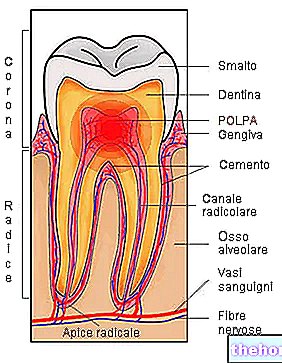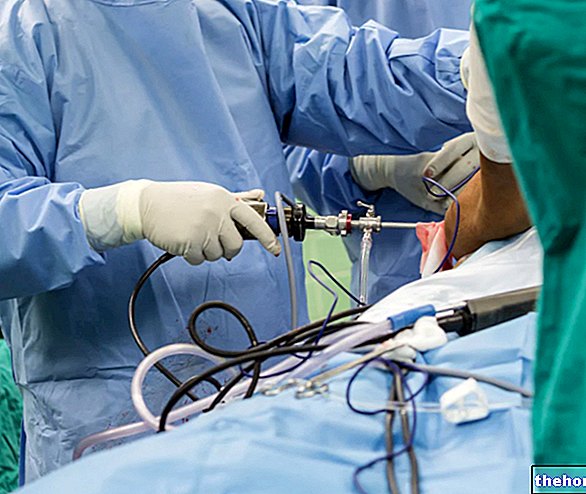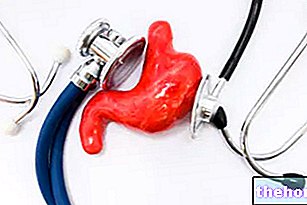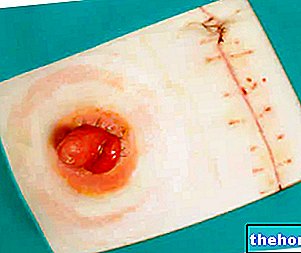What is apicoectomy?
Apicoectomy is an invasive dental procedure that involves the removal of the infected apex of a tooth root.

Although relatively simple and almost painless, an apicoectomy requires the qualification of the operator and the collaboration of the patient.
In the rest of the article we will describe in detail all the phases of the apicoectomy; subsequently, we will answer to frequently asked questions and doubts in order to eliminate, as much as possible, the typical pre-intervention tension.
Intervention
Apicoectomy is a rather simple surgical procedure: after having anesthetized the diseased tooth, one can proceed with the removal of the infected mass from the apex of the root.
The main phases of the intervention are described below:
- After having put the tooth to sleep using local anesthesia, the doctor makes an "incision directly into the gum: by doing so, the underlying root is completely exposed.
- Infected tissue is removed using special surgical instruments
- The last millimeters of the root are removed (the root is left "uncovered")
- The apicoectomy proceeds with the meticulous disinfection of the treated area to reduce the bacterial load: by doing so, it is possible to prevent further, possible, infections
- The next step is the obturation of the root tip: the end of the root - the tip of which has been removed - must be sealed with a biocompatile material to deny access to bacteria. This operation is called retrograde sealing or obturation
- The apicoectomy ends with the perfect repositioning of the gingival flaps: the gum must be stitched up with special sutures
Stitches that do not dissolve will need to be removed by the doctor 2-7 days after surgery.
Watch the video
- Watch the video on youtube
Duration of the intervention
The duration of the intervention generally varies from a minimum of half an hour to a maximum of 90 minutes, depending on the tooth to be treated, the severity of the lesion and the complexity of the root structure of the tooth.
Risks and complications
Being a "surgical operation," apicoectomy can create discomfort or pain in the days following the surgery. The most common symptoms reported by patients undergoing apicoectomy are:
- Pain and swelling (more pronounced the day after the "apicoectomy)
- Numbness of the gum in the dental half-arch where the operation was performed
- Chewing difficulties
- Gingival bleeding
- Dental sensitivity
- Need to resort to tooth extraction in case of unsuccessful apicoectomy
A non-negligible risk is the failure of the intervention: in case of failure, the only conceivable option to correct the error consists in the extraction of the tooth. The success of the intervention in the long term is essentially given by the specialist's ability to perfectly seal the apex of the root, in order to guarantee a certain protection from possible bacterial attacks.
From here we understand how important it is to rely on expert and highly qualified doctors.
However, a perfectly performed apicoectomy is usually a permanent solution.
After the apicoectomy
To speed up wound healing and minimize post-apicoectomy pain, the doctor will have to educate the patient on the correct behavior to follow: the observance of some simple precautions can, undoubtedly, favor a faster recovery, minimizing the appearance of complications.
The following are the general indications to be observed after an apicoectomy:
- To ease the pain when the effect of the anesthesia wears off, it is recommended to place an ice pack (wrapped in a soft cotton cloth) on the outside of the jaw, in line with the intervention site.
- Regularly take anti-inflammatory drugs (eg ibuprofen) in the 5-6 days after apicoectomy: continuous administration of NSAIDs minimizes pain and reduces swelling in a short time. Ibuprofen (eg. Brufen, Moment): it is recommended to take the drug by mouth at a dose of 200-400 mg (tablets, effervescent sachets) every 4-6 hours after meals, as needed. Do not take more than 2.4 grams per day.
- If necessary, take an antibiotic as a precaution to reduce the risk of infection: follow the instructions given by the doctor. The antibiotic can only be taken with a medical prescription.
- Gently rinse the mouth with disinfectant mouthwashes (eg chlorhexidine 0.2%) only 12-24 hours after the apicoectomy. Continue rinsing for at least two weeks after the operation.
- Follow a soft diet, consisting of soft foods such as mashed potatoes, warm soups, warm soups, smoothies, ground beef, baby food, puddings, meatballs, boiled fish, etc.
- Observe absolute rest in the 2-3 days following the intervention
- Do not vigorously brush the gum undergoing surgery to avoid injuring the painful and swollen area. Prefer a soft bristle brush; however, the use of a water jet is not recommended.
- Do not lift the lip corresponding to the tooth undergoing apicoectomy to avoid loosening the stitches made on the gum
After 6 months / one year from the apicoectomy, the patient should undergo a radiographic control to verify the success of the dental operation in the long term. If even after one year from the operation the conditions of the tooth that has undergone the apicoectomy are optimal from the conservative point of view, the chances that the granuloma can recur are extremely low. More generally, a perfectly successful apicoectomy guarantees extraordinary (and permanent) coverage from apical infections in general.




























